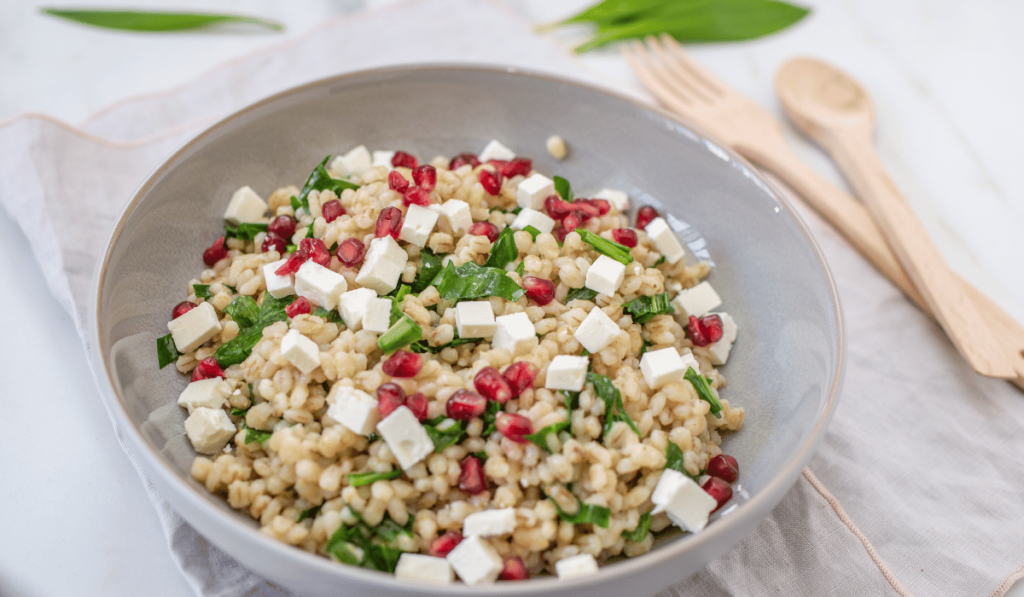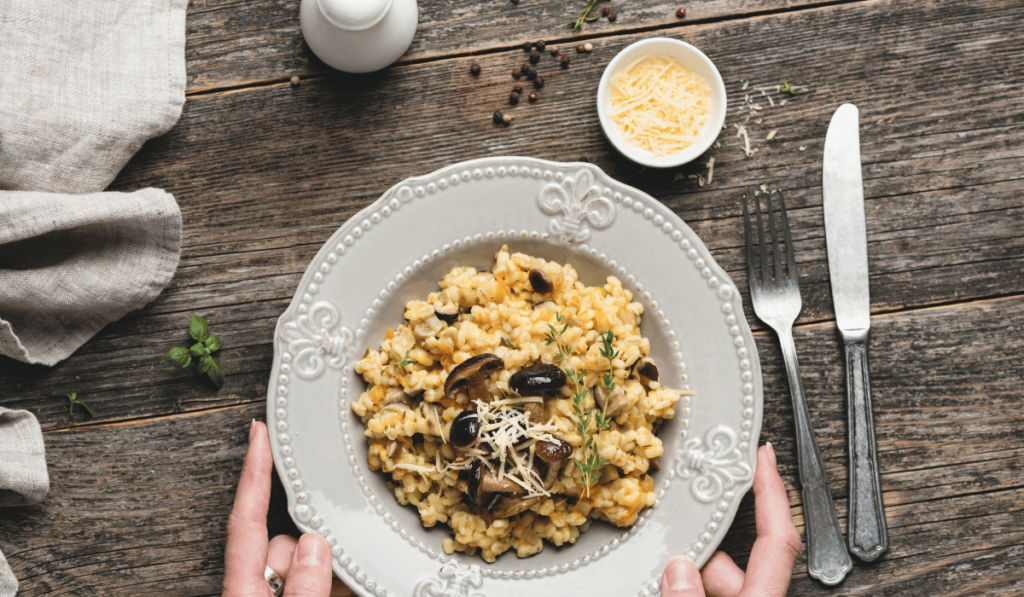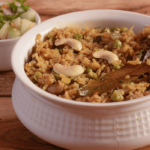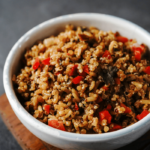The Best Fluffy Pancakes recipe you will fall in love with. Full of tips and tricks to help you make the best pancakes.
Table of Contents
ToggleHow to Cook Barley Rice
Barley rice is a versatile and nutritious grain that can be a great addition to your culinary repertoire. Whether you’re a seasoned chef or a beginner in the kitchen, cooking barley rice is a straightforward process that yields delicious results. In this comprehensive guide, we will walk you through the step-by-step process of cooking barley rice, explore the different types of barley, discuss its nutritional benefits, and provide some creative ideas for incorporating barley rice into your meals.
1. Introduction to Barley Rice
Barley rice, also known as pearl barley, is a nutritious and versatile grain that has been a staple in many cuisines for centuries. It has a slightly nutty flavor and a chewy texture, making it a satisfying addition to a variety of dishes. Barley rice is packed with essential nutrients, including fiber, vitamins, and minerals, making it a healthy choice for those looking to incorporate whole grains into their diet.
2. Types of Barley
There are several types of barley available, each with its own unique characteristics. The three most common types of barley are hulled barley, pearled barley, and quick barley.
Hulled Barley
Hulled barley is the least processed form of barley, with only the outermost hull removed. It retains the bran and endosperm layers, making it the most nutritious option. Hulled barley has a chewy texture and takes longer to cook compared to other types of barley.
Pearled Barley
Pearled barley is hulled barley that has undergone further processing to remove the bran and some of the germ. This results in a quicker cooking time and a softer texture. Pearled barley is the most commonly found type of barley in grocery stores.
Quick Barley
Quick barley is made from pearled barley that has been partially cooked and then dried. This pre-cooking process reduces the cooking time even further, making quick barley a convenient option for those short on time.

3. Benefits of Barley Rice
Barley rice offers a range of health benefits due to its nutrient-rich composition. It is an excellent source of dietary fiber, which aids in digestion and helps regulate blood sugar levels. Barley rice is also rich in vitamins and minerals, including manganese, selenium, copper, and magnesium. Furthermore, the soluble fiber in barley rice has been linked to a reduced risk of heart disease and improved cholesterol levels.
4. How to Cook Barley Rice on the Stovetop
Cooking barley rice on the stovetop is a straightforward process that requires minimal effort. Follow these steps for perfectly cooked barley rice:
Soaking the Barley
Before cooking, it is recommended to soak the barley rice, especially if you are using hulled barley. Soaking helps reduce the cooking time and improves the texture of the grains. Place the desired amount of barley rice in a bowl and cover it with water. Let it soak for at least 4 hours or overnight for best results.
Cooking the Barley
After soaking, drain the barley rice and rinse it with fresh water. In a large pot, combine the soaked barley rice with water or broth in a 1:3 ratio (1 cup of barley to 3 cups of liquid). You can add a pinch of salt or other seasonings to enhance the flavor. Bring the mixture to a boil, then reduce the heat to low and cover the pot. Simmer for about 45 minutes to 1 hour for hulled barley, or 25 to 30 minutes for pearled barley. Stir occasionally to prevent sticking.
Fluffing and Serving
Once the barley rice is tender and has absorbed most of the liquid, remove the pot from heat. Let it sit, covered, for a few minutes to allow the grains to steam and become fluffy. Fluff the barley rice with a fork before serving. You can enjoy it as a side dish, use it as a base for salads or bowls, or incorporate it into various recipes.

5. How to Cook Barley Rice in a Rice Cooker
Using a rice cooker to cook barley rice is a convenient and foolproof method. Here’s how to do it:
Rinsing the Barley
Start by rinsing the barley rice under cold water to remove any impurities or residual starch. This step helps prevent the grains from clumping together during cooking.
Preparing the Rice Cooker
Spray the bottom of the rice cooker pot with cooking spray or lightly coat it with oil to prevent sticking. This step is optional but can make cleaning easier.
Cooking the Barley
Add the rinsed barley rice and water or broth to the rice cooker pot. The general ratio is 1 cup of barley rice to 2 cups of liquid. However, check the instructions for your specific rice cooker as the ratios may vary slightly. Close the lid and select the appropriate setting for cooking rice or grains. Press the start button and let the rice cooker work its magic.
Fluffing and Serving
Once the rice cooker indicates that the cooking cycle is complete, let the barley rice sit for a few minutes before opening the lid. This allows the grains to steam and absorb any remaining moisture. Use a fork to fluff the barley rice, ensuring the grains are separated and fluffy. Transfer the cooked barley rice to a serving dish and enjoy it as desired.
6. How to Cook Barley Rice in an Instant Pot
If you own an Instant Pot or another electric pressure cooker, you can easily cook barley rice in it. Follow these steps:
Rinsing the Barley
As with the other methods, rinse the barley rice under cold water to remove any debris or starch.
Preparing the Instant Pot
Place the rinsed barley rice in the Instant Pot along with the recommended amount of water or broth. The general ratio is 1 cup of barley rice to 2 cups of liquid, but refer to your Instant Pot’s manual for specific instructions.
Cooking the Barley
Secure the lid on the Instant Pot and ensure the pressure release valve is set to the sealing position. Select the manual or pressure cook setting and set the cooking time according to the type of barley rice you are using. For example, pearled barley typically requires around 15 minutes of cooking time, while hulled barley may take 30 minutes or more. Once the cooking time is complete, allow for a natural pressure release for about 10-15 minutes before manually releasing any remaining pressure.
Fluffing and Serving
Carefully remove the lid once the pressure has been fully released. Use a fork to fluff the barley rice, ensuring that the grains are light and separated. Transfer the cooked barley rice to a serving dish and serve it alongside your favorite dishes.

7. Tips for Cooking Perfect Barley Rice
To ensure optimal results when cooking barley rice, consider the following tips:
Water Ratio
The recommended water-to-barley ratio for cooking barley rice varies depending on the type of barley and your personal preference. As a general guideline, use a 1:2 or 1:3 ratio of barley to water. Adjust the amount of liquid according to your desired texture and the specific instructions for the type of barley you are using.
Adding Flavor
While barley rice has a pleasant nutty flavor on its own, you can enhance its taste by adding various seasonings and ingredients. Consider cooking barley rice in vegetable, chicken, or beef broth for added flavor. You can also infuse the cooking liquid with herbs, spices, or aromatics such as garlic, onion, or bay leaves.
Cooking Time
The cooking time for barley rice depends on the type of barley and your preferred texture. Hulled barley generally takes longer to cook, requiring around 45 minutes to 1 hour on the stovetop or in a rice cooker. Pearled barley cooks more quickly, typically taking 25 to 30 minutes. Quick barley has the shortest cooking time, usually around 10 to 15 minutes. Adjust the cooking time as needed, keeping in mind that the grains should be tender but still slightly chewy.
Testing for Doneness
To determine if the barley rice is cooked to your liking, taste a few grains. They should be soft and chewy, but not mushy. If the barley rice is still too firm, continue cooking for a few more minutes and check again. Remember that the grains will continue to absorb moisture as they sit, so slightly undercooking them is preferable to avoid a mushy texture.
8. Storing and Freezing Cooked Barley Rice
If you have leftover cooked barley rice, you can store it for future use. Allow the cooked barley rice to cool completely before transferring it to an airtight container. Refrigerate it for up to 3-5 days. For long-term storage, freeze the cooked barley rice in freezer-safe containers or bags. It can be stored in the freezer for up to 6 months. When reheating frozen barley rice, thaw it in the refrigerator overnight or use the defrost setting on your microwave.
9. Barley Rice Recipes
Barley rice is a versatile ingredient that can be used in a variety of dishes. Here are a few recipe ideas to inspire your barley rice culinary adventures:
Barley Rice Salad
Combine cooked barley rice with fresh vegetables, herbs, and your favorite dressing for a refreshing and nutritious salad. Add some protein such as grilled chicken or chickpeas for a complete meal.
Barley Rice Soup
Use barley rice as a hearty addition to soups and stews. Its chewy texture adds a satisfying element to broths and complements vegetables, meats, or legumes.
Barley Rice Stir-Fry
Create a healthy and flavorful stir-fry by incorporating cooked barley rice along with your choice of vegetables, protein, and seasonings. The nutty flavor of the barley rice pairs well with Asian-inspired sauces.
Barley Rice Pilaf
Prepare a delicious pilaf by sautéing cooked barley rice with aromatic vegetables, such as onions and garlic, in a bit of oil or butter. Add your favorite herbs, spices, and even dried fruits or nuts for added texture and flavor.
ALSO READ: How Many Whistles to Cook Basmati Rice in a Pressure Cooker
Frequently Asked Questions about Barley Rice
Here are some commonly asked questions about cooking barley rice:
Q: Is barley rice gluten-free? A: No, barley contains gluten and should be avoided by those following a gluten-free diet.
Q: Can I mix barley rice with other grains like basmati rice? A: Yes, mixing barley rice with other grains like basmati rice can create a delightful combination of flavors and textures. Experiment with different ratios to find your preferred blend.
Q: How much does barley expand when cooked? A: Barley rice expands significantly when cooked. As a general rule, 1 cup of uncooked barley rice will yield approximately 3 cups of cooked barley rice.
Q: Should I cook barley rice before adding it to soups or stews? A: It is not necessary to precook barley rice before adding it to soups or stews. The grains will cook and soften as the soup or stew simmers, absorbing the flavors of the other ingredients.
Q: Where can I buy barley rice? A: Barley rice is commonly available in most grocery stores, health food stores, or online retailers. Look for it in the grain or rice section of the store.
Conclusion
Cooking barley rice is a simple and rewarding process that opens up a world of culinary possibilities. Its versatility, nutritional benefits, and delicious flavor make it a fantastic addition to any meal. Whether you choose to cook barley rice on the stovetop, in a rice cooker, or in an Instant Pot, you’ll be able to enjoy its nutty goodness in a variety of dishes. So, grab a bag of barley rice and embark on a culinary adventure that will delight your taste buds and nourish your body.




